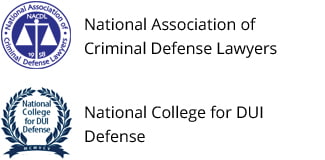- Free Initial Consultation: (480) 413-1499 Tap Here To Call Us
Strict-Liability Aggravated DUI In Arizona: What The Latest Case Means For Your Defense
Arizona courts recently clarified a key question about aggravated DUI charges that involve wrong-way driving. The Court of Appeals held that the “wrong-way on a highway” aggravator in A.R.S. Section 28-1383(A)(5) works as a strict-liability element. In plain terms, prosecutors do not have to prove you knew or should have known you were traveling against traffic to elevate a DUI to an aggravated felony. You still have defenses, and you still control smart choices that can protect your record.
Arizona treats impaired driving against the legal flow of traffic as a Class 4 felony with mandatory prison time if convicted. You may feel overwhelmed by the label “strict liability.” Yet, the State must still prove every element beyond a reasonable doubt, including that you actually drove the wrong way on a properly designated and signposted roadway.
What “Strict Liability” Changes In A Wrong-Way Aggravated DUI
The court’s ruling removes any mens rea requirement for the wrong-way component under Section 28-1383(A)(5). That means the State does not need to show you knew the direction of travel was unlawful to establish the aggravator. Prosecutors still must carry the burden of impairment and of wrong-way travel against the legal flow of traffic. The opinion aligns with earlier Arizona precedent that treated some aggravated DUI subsections as strict liability and others as requiring proof of knowledge, depending on statutory text.
This distinction matters because it changes how you and your lawyer frame the fight. You cannot defeat the aggravator by arguing that you lacked awareness of signage. You can still challenge whether the State proved a wrong-way movement as the statute defines it and whether the roadway was marked correctly.
The Elements The State Still Must Prove
Even under strict liability, the State must present competent evidence on each element. You strengthen your position by understanding where those proofs can fall apart.
- Wrong-way movement: The statute defines “wrong way” as travel against the legal flow of traffic. The State must show actual movement in the opposing direction, not a momentary misalignment or a disputed lane position.
- Proper designation and signage: The legal flow of traffic depends on the roadway’s designation and posted signs. Missing, obscured, or contradictory signs can undercut the claim that you drove against a clearly established direction. This second point guides your evidence requests so you do not overlook physical-world details that jurors understand well.
- Impairment under Section 28-1381 or Section 28-1382: The aggravated count rides on an underlying DUI. The State must still prove impairment or an unlawful alcohol concentration as charged.
Each point above opens a lane for targeted investigation, motion practice, and trial strategy. You improve outcomes by forcing the prosecution to meet the law’s full demand for proof.
Defense Paths That Still Work After Franz
Strict liability for the wrong-way element narrows one argument, yet several powerful avenues remain.
- Video and scene evidence. Patrol dash cams, body-worn cameras, intersection cameras, and nearby business systems can clarify direction of travel, lane position, lighting, and sign visibility. Photographs taken soon after the stop can capture downed, blocked, or twisted signs. This evidence helps you test the State’s story with real-world images that support reasonable doubt.
- Traffic-engineering proof. Maintenance logs, sign inventories, and traffic-control plans document what should have been posted and when. If a sign was missing or placed outside the standard distances, the “legal flow of traffic” proof may look less confident. An engineer can explain how a driver could enter a ramp or frontage road that did not give clear notice.
- Field sobriety and breath testing challenges. Standardized field tests require proper administration. Portable devices have inherent margins of error. Blood or breath testing demands strict compliance with protocols. Chain-of-custody issues and instrument calibration records offer additional angles. A weakness in the underlying DUI can defeat the felony count because the aggravator cannot stand alone.
- Jury instructions and evidentiary issues. Even after Franz, the court must correctly instruct the jury on “wrong-way” and on the State’s burden for each element. Limiting instructions on prejudicial photos or inflammatory phrasing can protect your right to a fair trial.
You gain leverage when you build your case around objective records and physical facts that jurors can see.
Sentencing Stakes And Why Early Action Helps
A wrong-way aggravated DUI is a Class 4 felony with mandatory prison if convicted. Collateral fallout can include license consequences, ignition-interlock requirements, and employment problems. Early counsel improves your odds because crucial camera footage, traffic maintenance records, and witness contact information become harder to secure over time. You help yourself when you contact counsel immediately, preserve your phone’s location data, list potential witnesses, and avoid discussing facts on social media.
Talk With An Arizona DUI Defense Lawyer Today
You do not need to guess your way through a felony DUI. You can take control by forcing the State to prove wrong-way travel under the statute’s terms and by challenging the underlying DUI with precision. The Law Office of James E. Novak will review your case, secure the records that matter, and build the most vigorous defense available under Arizona law. Call (480) 413-1499 to schedule your free consultation. You protect your future when you act now.






















